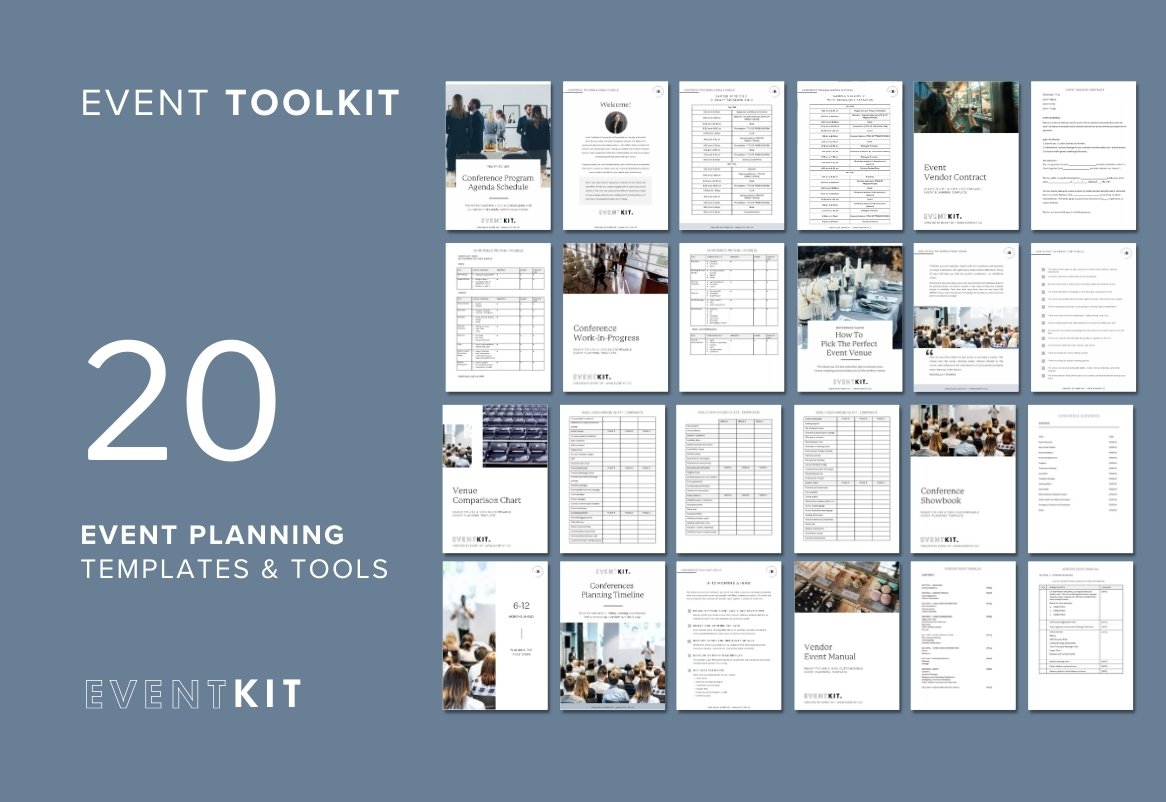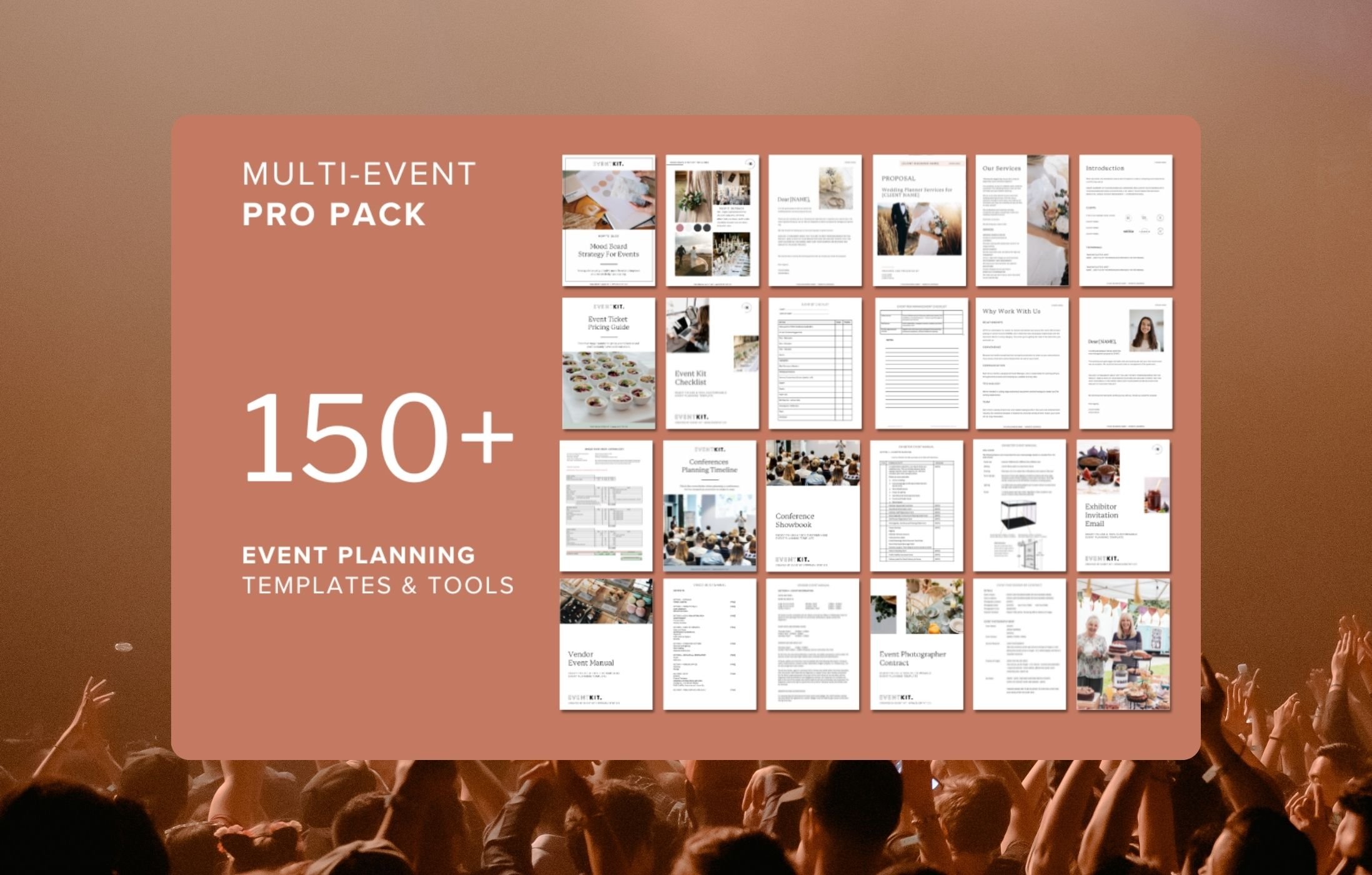Event Run Sheet Template: Step-by-Step Guide
Enjoy a streamlined and easy flow from bump-in to bump-out with our easy 5-step method for using an event run sheet and download our free sample event run sheet template.
Pro Tip: Don’t forget to download your free sample run sheet template.
What is an Event Run Sheet?
If you want to enjoy a streamlined and easy flow from bump-in to bump-out, then you’re reading the right article. That’s because you’re about to discover our easy 5-step method for using an event run sheet to streamline your event day.
And the good news is it works even if you are new to event planning and have never used an event run sheet template before.
Used by event managers around the world, an event run sheet is designed to track key event day activity & contacts, communicate updates to your team and save time.
You’ll find that your event day goes much more smoothly with an event run sheet because you will:
Plan and coordinate bump-in to bump-out
Plot activity quickly and easily
Communicate schedules to your team
Plan across multiple days & venues
List key contact details.
The Event Run Sheet, also referred to as the Event Production Schedule, Run of Show, or Event Schedule, lists the entire schedule of an event day. It outlines the order of activities, tasks, and other important details required for the event day.
Step 1: Download Free Event Run Sheet Template
Many people who are new to events don’t even realise that they can get pre-made templates before they start planning their event.
New event planners find themselves staring at a blank Excel spreadsheet. And that’s why a lot of people who try to plan a successful event end up falling behind – they are missing this crucial step.
So, the first thing you need to do is jump over to our Freebies page. Find the “01—Download our free run sheet template for a seamless event day.” to download your own copy.
You’ll get our ready-to-use event run sheet template that also comes with a pre-filled example of event day tasks and activities.
Download our FREE run sheet template for a seamless event day.
Get a FREE sample of our top performing tool for a stress-less event. Plan and track key event activity easily and enjoy a smooth flow from bump-in to bump-out. Download Now
Get a FREE sample of our event run sheet template. Download Now
Step 2: Add Event Details
The next thing you need to do is add in your event details. This includes event detail such as the event title, date of event, location of event and contact details of the event manager.
When I first started working with an event run sheet, I was new and I made a lot of mistakes. And now that I’ve helped others do it, I see a lot of people have a tendency to make the same mistakes. So let me share with you the top 3 mistakes and how to avoid them:
Mistake 1
Not checking details are accurate. What you should do is check and double-check all the details you add to your run sheet before the event day.
Mistake 2
Adding too much detail, and too many unnecessary words. Use short sentences and include only essential information.
Mistake 3
Not consulting with the team. This is the most common mistake, and perhaps the most important to overcome. I recommend you schedule in a date in your overall event plan timeline to meet with your key players to get feedback on the first draft of your run sheet with the team. Check that the details and times make sense and seem right to them too.
Step 3: Add Event Tasks & Activity
At this step you’re about to dig into the details and start organising your schedule by time. So, what you need to do is start jotting down the key tasks and activities for the event set-up and pack-down, along with their start time.
I still remember the first time I was doing this step and trying to organise my event day. I had my list of tasks and I had my list of start times for each supplier and contractor activity.
However I made the mistake of not checking with my suppliers that they were actually booked in for the times I listed in my run sheet. I just assumed they could read my mind from afar. Yikes, did it result in a messy, chaotic and stressful event! Don’t make the same mistake as I did.
How to add event items to the run sheet:
1. List each key event task or activity (use one line per item)
2. Sort in chronological order the start time for each item
3. Note the location of the tasks or activity (main stage, back of house etc.)
4. Don’t add too much detail in long sentences. Keep it short and sweet
5. Then add key contacts and notes
Step 4: Add Key Contacts & Notes
You’ll notice in our run sheet template there is a column for “Lead”, “Contact” and “Notes”. Don’t overlook or neglect these sections because they will contain valuable information.
Lead Section
The lead section refers to the person or company responsible for completing that activity, overseeing that activity or supplying that service or equipment etc. Protocol varies a bit here - sometimes people like to add a specific team member’s name, and other times people just list the company. Do what makes sense to you and your team.
Contact Section
The contact section is great for adding a name and phone number. Who specifically can you contact on event day? It’s possible that you’ll get a specific “event day contact person” from your supplier. List them in the run sheet.
Notes Section
The notes section is great for when you need to add specific notes, reminders, or details about your event booking or the task and activity. To get an idea of how our team uses the notes section of the run sheet, we’ve include sample event items as an example. It’s just one more way to make sure nothing gets missed, and keep everyone in the loop.
Step 5: Share with Key Players
And in this final step, you will share your event run sheet with key players involved in the running of the event. Whether it's your event staff, volunteers, contractors, or suppliers, everyone involved in the event day should have access to a version of the run sheet. Consider sending out your run sheet via email or use a cloud-based platform.
Before you email or print out your finalised event run sheet, take a moment to review all the details. Ensure that event activity is accurately scheduled, contact details are correct, and every note is clear and concise. It's also a good idea to double-check the overall flow of the schedule to make sure it makes sense and aligns with your supplier bookings.
💡Pro Tip: Remember to get feedback. Encourage team members to review your run sheet thoroughly and address any questions or concerns they have before the event day. By sharing the run sheet with your team, you're fostering clear communication and alignment, setting the stage for a successful and cohesive event execution.
Featured Event Toolkits
Which Templates are Right for You?
When it comes to choosing your event planning tools, remember to choose templates that best align with your event requirements, and your unique needs and style of event planning. Always choose the right event templates for you.
With Event Kit, you get access to our library of over 150 ready-to-use event templates and tools made for easy event planning. Event Kit templates are designed to help you streamline your processes, stay organised, and deliver remarkable events.
Ask Our Team
Still don’t know where to get started? Not sure how to pick the right templates? Let’s chat!
Related Content
Popular Posts

Hey, I’m Rachella!
Welcome to our blog. If you’ve come to find ideas and inspiration about event planning and entrepreneurship, and everything in between—you’re in the right place. Enjoy!
Shop 150+ Event Planning Tools
Better events, less stress. Pre-made event templates for seamless and easy event planning. Shop Templates












30 ready-to-use event templates and tools designed to give you the essentials for planning events from start to finish! This is our signature toolkit—if you only buy one thing today, make it this special collection of event planning tools.
Made for new event planners and busy event professionals. Price in USD.
See full description